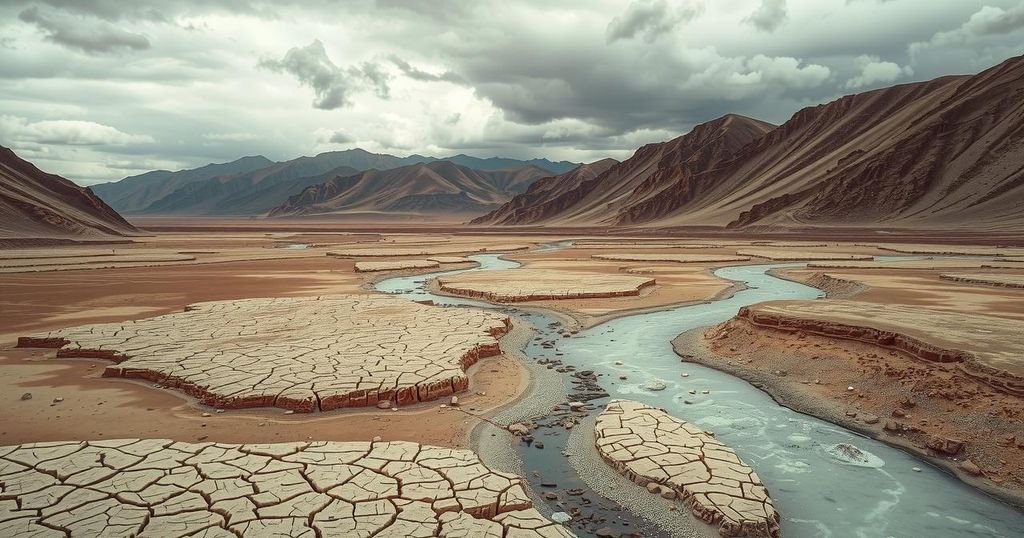Climate Change Threatens Farming Viability in Afghanistan’s Arid Provinces

In Afghanistan’s driest provinces, climate change has made farming increasingly unviable. Diminished water reserves from reduced rainfall and increased temperatures have caused severe water shortages. This has led to socio-economic crises, including increased poverty, migration, and mental health challenges. Immediate action is necessary to prevent further deterioration of agricultural conditions and livelihoods.
In Afghanistan’s driest and poorest provinces, climate change has severely compromised farming viability. Traditionally, mountainous regions provided vital water resources through melting snow and seasonal rains that supported rivers and groundwater systems. However, climate change has led to declining water reserves due to decreased rainfall, rising temperatures, and frequent droughts, creating significant economic and social challenges.
The escalating water shortage crisis has reached various regions of Afghanistan, including the capital, Kabul, where residents often struggle to access drinkable water. Local testimonies indicate a dramatic decline in snowfall, with only one or two instances last winter compared to 12-14 in previous years. This shift in precipitation patterns has negatively impacted grain production and exacerbated water scarcity issues.
In the province of Bamyan, known for its water abundance, residents now face drinking water shortages, forcing some families to walk great distances to retrieve clean water. Similarly, the neighboring Nimroz province has been affected by decreasing groundwater levels due to reduced rainfall and increased water extraction, impacting both agriculture and people’s access to potable water.
Nimroz is sparsely populated, with Zaranj as its capital and a majority ethnic Baloch population, many of whom are nomadic livestock herders. Approximately 44% of Afghans rely on agriculture and herding for survival, indicating that environmental safety is tied to their livelihoods. The rising costs of water are forcing families to migrate in search of better conditions.
The socio-economic crisis and compounded psychological impacts have increased anxiety and desperation among the population, leading some to resort to criminal activities for survival. Farmers are unable to irrigate their land due to dwindling water supplies, prompting many to change their crops or reduce the land they cultivate. Over 75% of Afghanistan’s land faces desertification, diminishing essential vegetation and promoting soil erosion.
Villages in Nimroz, such as Chakhansur, Chahar Borjak, and Kang, have seen increased emigration to neighboring Iran. Though efforts are underway to repair local dams, the water supply remains inadequate for local needs. Residents frequently pay for both fresh and saline water, indicating the severity of the water shortage.
Local farmers express their frustration over persistent water scarcity, emphasizing the unpredictability of water access. A farmer noted, “We have been facing water shortages for several years. Water is available for one day and then it is gone for a few more days.” Many farmers, like Karim from Chakhansur, indicate continual drought undermines agricultural viability, discouraging their pursuit of farming as an occupation.
If urgent actions are not taken to address the water crisis and its related challenges, the repercussions could escalate, threatening the livelihoods of farmers and worsening Afghanistan’s agricultural economy.
The article highlights the severe impact climate change has had on farming viability in Afghanistan, particularly in its most arid provinces. With dwindling water resources, the agricultural sector faces critical challenges affecting livelihoods. The ongoing water crisis contributes to social strife and increases migration, further exacerbating poverty and mental health issues among affected communities. Without immediate intervention, these trends threaten to leave lasting scars on the agricultural landscape and the economy of Afghanistan.
Original Source: www.downtoearth.org.in







